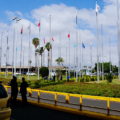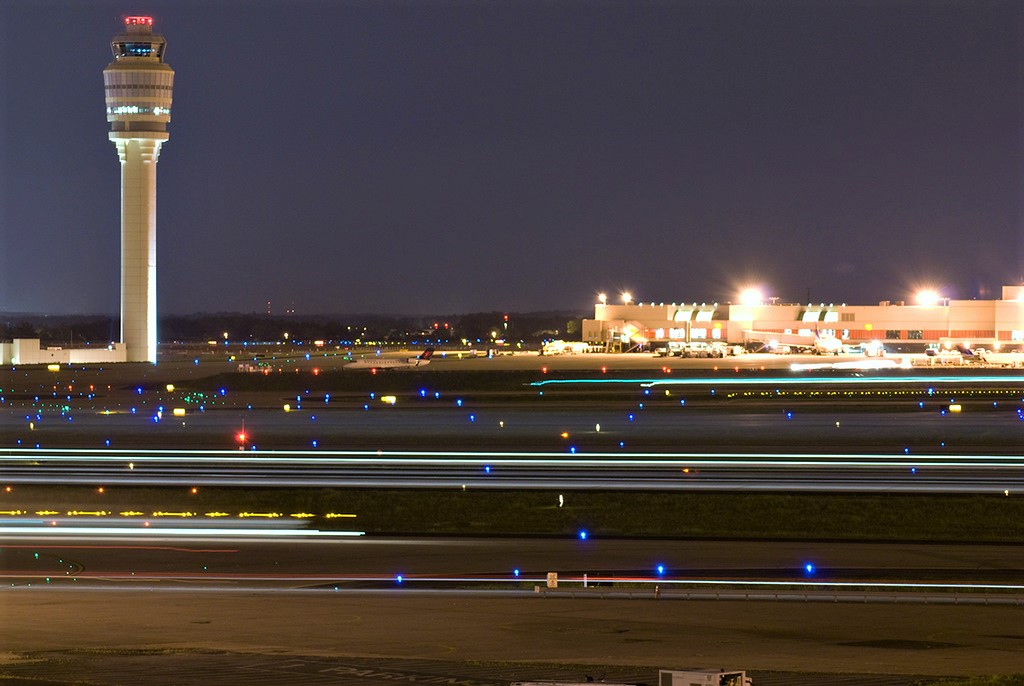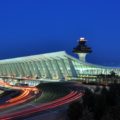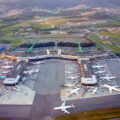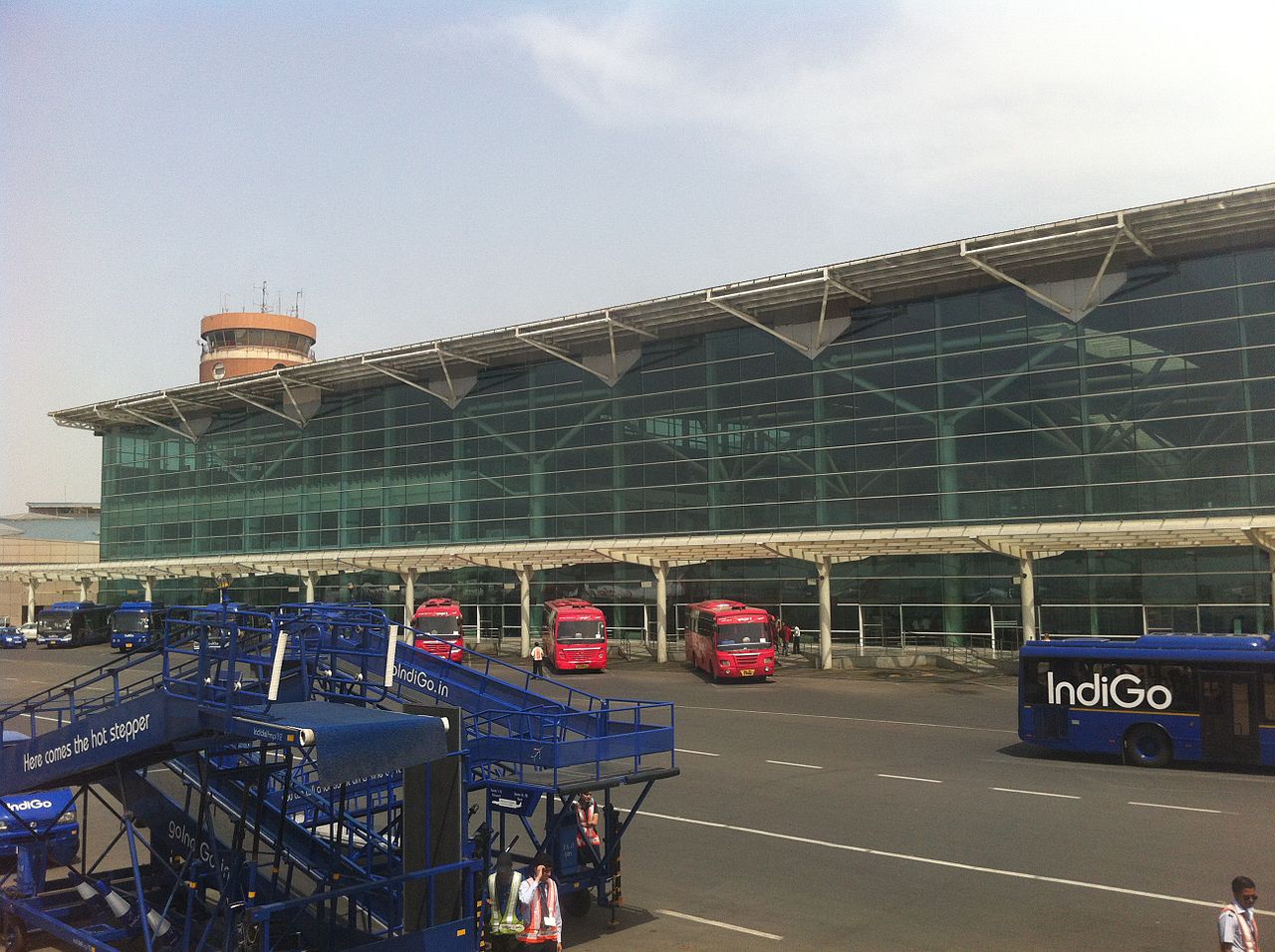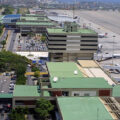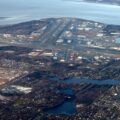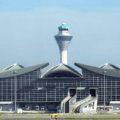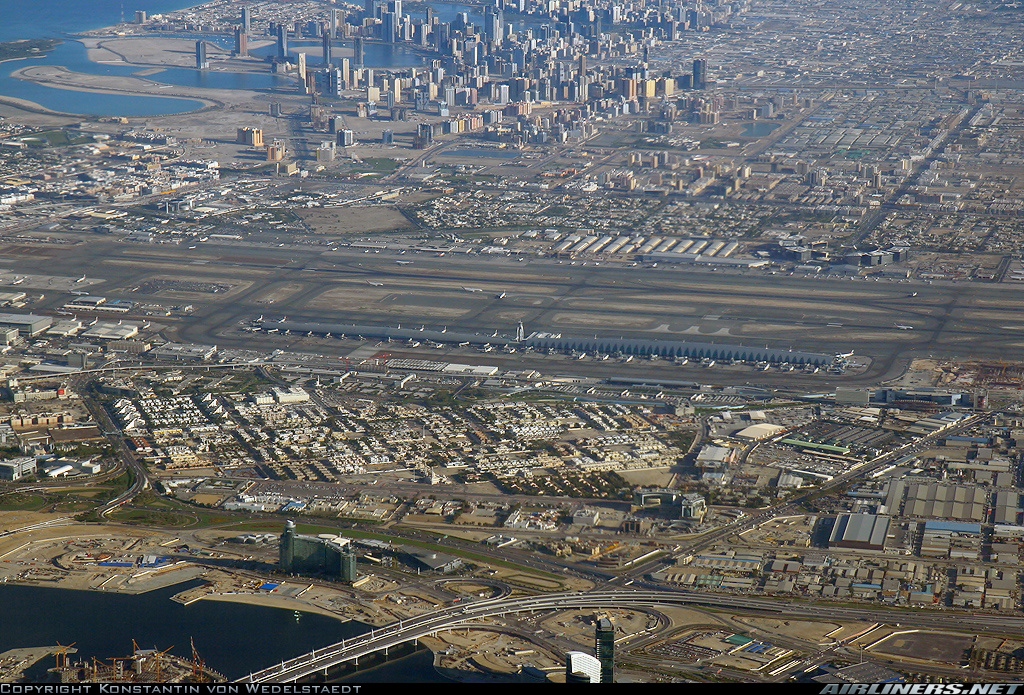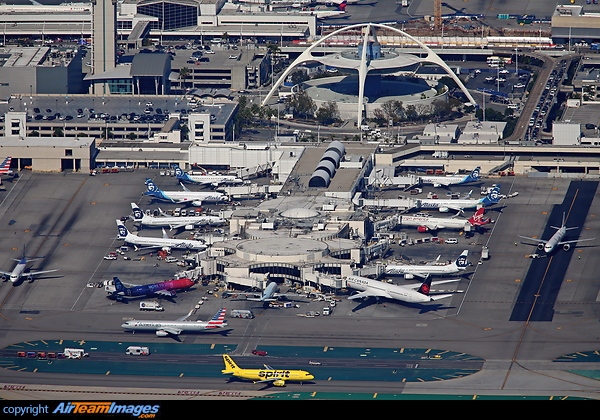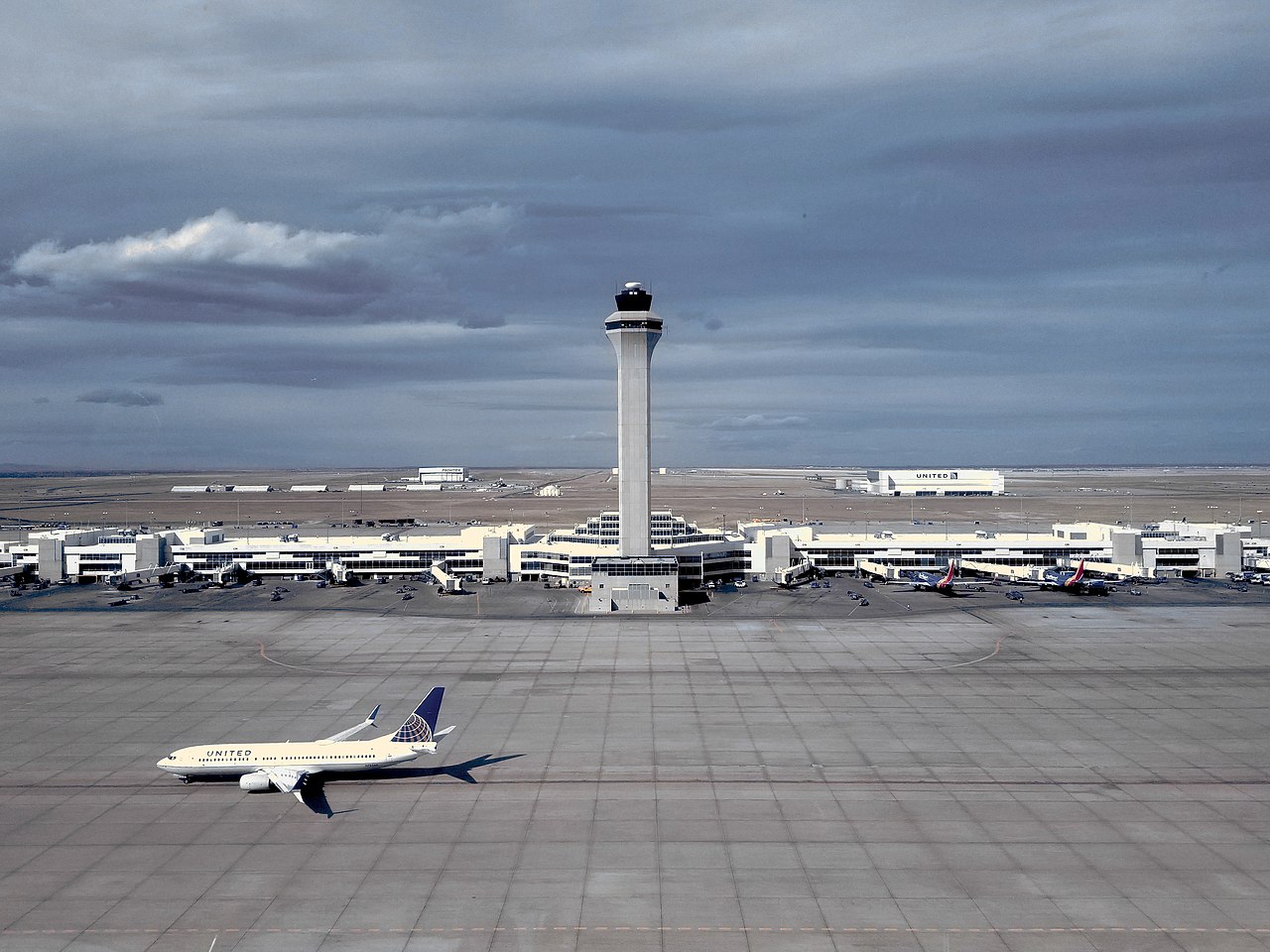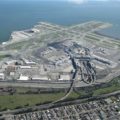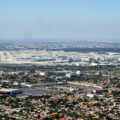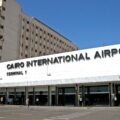Aviation
Johannesburg O. R. Tambo International Airport
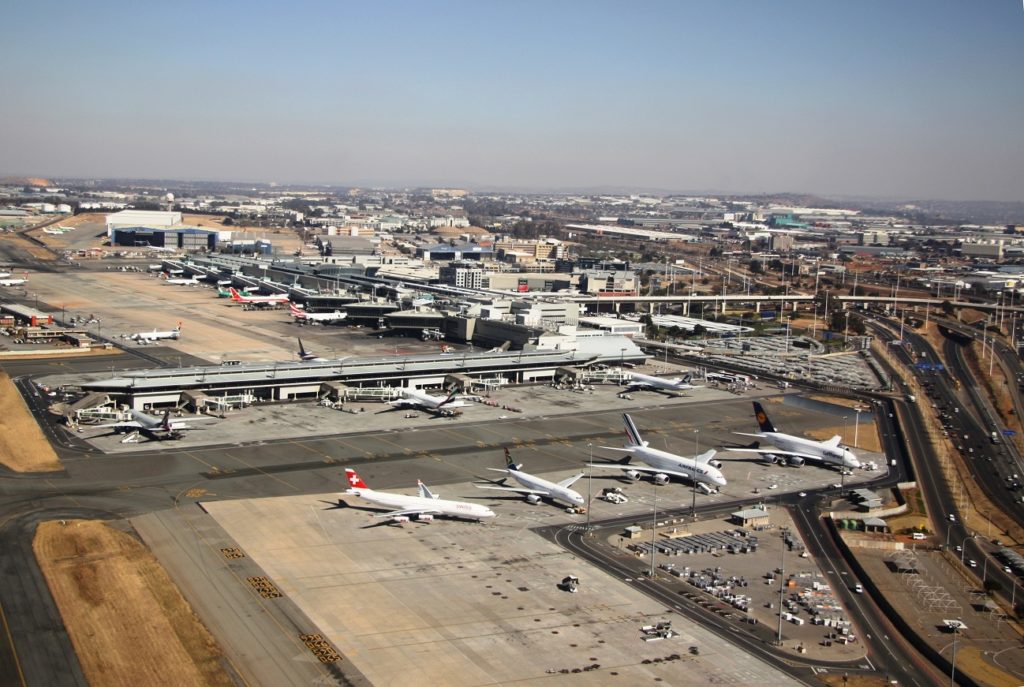
Source: PretoriaTravel
| IATA: JNB ICAO: FAOR WMO: 68368 | |
| Airport type | Public |
| Owner | Airports Company South Africa |
| Serves | Johannesburg, South Africa |
| Location | Kempton Park, Ekurhuleni, Gauteng, South Africa |
| Hub for | Airlink Comair FlySafair South African Airways Mango kulula.com |
| Time zone | SAST (UTC+02:00) |
| Elevation AMSL | 5,558 ft / 1,694 m |
| Coordinates | |
| Website | www.airports.co.za/airports/or-tambo-international |
O. R. Tambo International Airport (IATA: JNB, ICAO: FAOR) is a major international airport situated in Kempton Park, Gauteng, South Africa. It serves as the primary airport for domestic and international travel to/from South Africa and is Africa’s busiest airport, with a capacity to handle up to 28 million passengers annually. The airport serves as the hub for South African Airways. The airport handled over 21 million passengers in 2017.
It was originally known as Jan Smuts International Airport, after the former South African Prime Minister of the same name. The airport was renamed Johannesburg International Airport in 1994 when the newly elected African National Congress (ANC) government implemented a policy of not naming airports after politicians. This policy was later reversed, and on 27 October 2006 the airport was renamed O. R. Tambo International Airport after Oliver Reginald Tambo, a former ANC President.


Airport information
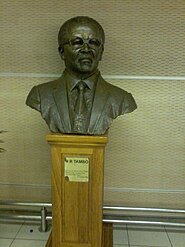

viewing deck above the CTB.
Source: Bobbyshabangu
O. R. Tambo International Airport is a hot and high airport. Situated almost 1,700 metres (5,500 feet) above mean sea level, the air is thin. The thinner air is also the reason for the longer than usual runways.
O. R. Tambo International Airport is one of only three airports in the Africa-Middle East region—as well as the only one properly located in Africa—that has non-stop flights to all six inhabited continents, the other two being Dubai International Airport and Doha International Airport.
On 10 January 2013 the airport’s ICAO code was changed from FAJS to FAOR.
South African Airways Museum
The South African Airways Museum once was located at the airport. This room full of South African Airways memorabilia was started by two fans of the airline as a temporary location until they could set it up in one of Jan Smuts International’s buildings in 1987. The museum has since relocated to Rand Airport (FAGM).
Aircraft viewing decks
The airport has two viewing decks. One is located above the Central Terminal Building, and the other in an administrative section of the airport above the international check-in counters. There are regular displays of Oliver Reginald Tambo, the airport’s namesake in the viewing decks.
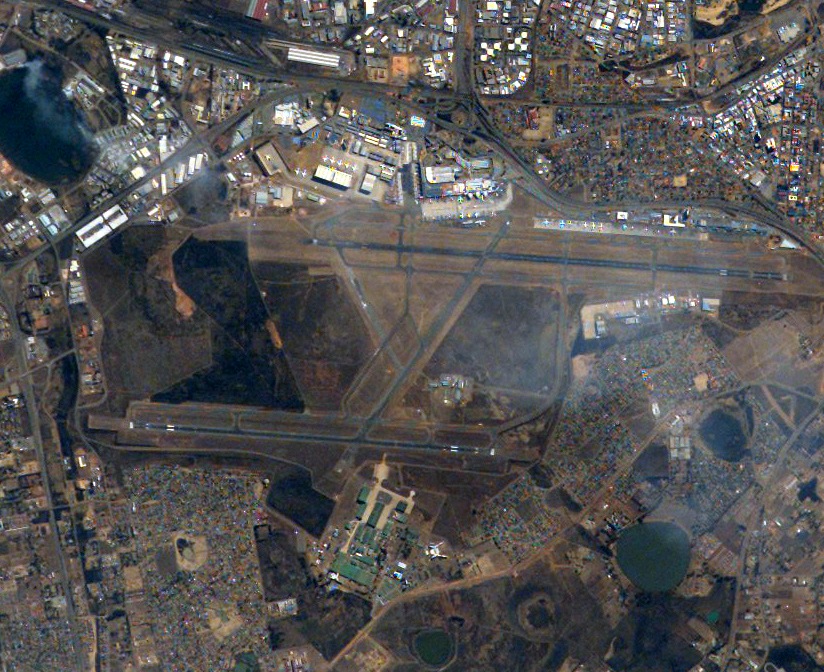

Source: user:Mattes
Infrastructure


Source: Kaihsu Tai


Source: @fry_theonly Flickr
Runways
O. R. Tambo International Airport has two runways (one pair of parallel runways) adjacent to the airport’s terminal buildings. There used to be a third runway, 09/27, but was closed due to the danger it posed. It is now taxiway Juliet.
| Number | Length | Width | ILS | Notes |
|---|---|---|---|---|
| 03L/21R | 4421m | 60m | PALS CAT II | Fully laden aircraft require a far greater length of runway to achieve take-off velocity at this altitude. It is the 33rd longest runway in the world. |
| 03R/21L | 3405m | 60m | PALS CAT II |


Source: Hansueli Krapf
The runways are equipped with Approach Lighting Systems. Sequenced flashers are not used at any South African runways and therefore not installed. Touchdown zone (TDZ) lighting is available, but never turned on. Runway Threshold, Edge and Centerline lights are the only lighting available. During busy periods, outbound flights use the western runway (03L/21R) for take-off, while inbound flights use the eastern runway (03R/21L) for landing. Wind factors may cause numerous variations, but on most days flights will take off to the north and land from the south.
Taxiways and aprons
O. R. Tambo International Airport has a network of asphalt taxiways connecting runways, aprons and maintenance facilities. All of these taxiways are 30.5 metres wide, except for taxiway Echo which is 60 metres wide. The airport also has nine aprons. Cargo aircraft park at aprons Golf and Whiskey. Many airlines have their aircraft wait long hours between arriving and departing flights. Such aircraft and other cargo aircraft are parked at aprons Delta and Foxtrot to free up jetbridges. Aprons Alpha, Charlie and Echo have jetbridges that connect them to their respective gates. The Bravo apron is not connected to the terminal building, and thus aircraft that land there must use an airport bus service.
Developments
ACSA reported that major new developments took place at the airport, in preparation for the 2010 FIFA World Cup. The development includes expansion of the international terminal, with the new international pier (opened in 2009), which includes gates for the Airbus A380 and increased capacity at the same time. A new Central Terminal building, designed by Osmond Lange Architects and Planners, was completed on April 1, 2009.[citation needed] An additional multi-storey parkade was built in January 2010, at a cost of R470 million opposite the Central Terminal Building,[citation needed] plus Terminal A was also upgraded and the associated roadways realigned to accommodate more International Departures space.
The Central Terminal Building (CTB) (cost: R2 billion) boosted passenger capacity at the landside of the terminal in 3 levels, and allows direct access from international and domestic terminals. Additional luggage carousels were added on March 12, 2010 to accommodate the Airbus A380.[citation needed] Arrivals are accommodated on Level 1, with departures expanded on Level 3; Level 2 accommodates further retail and commercial activities. The Gautrain Rapid Rail Link station is above the terminal.
The new International Pier (cost: R535 million) has increased international arrivals and departures capacity in a two-storey structure with nine additional airside contact stands, four of which are Airbus A380 compatible.[citation needed] Air bridges are already in place and the existing duty-free mall will be extended into this area. Additional lounges and passenger-holding areas will be constructed on the upper level.
A second terminal between the two runways has been cancelled. It would have contained its own domestic and international check-in facilities, contact stands, shops and lounges and was projected to cost R8 billion.


background and Lufthansa’s A380-800 “München” D-AIMB to the right.
Source: Hansueli Krapf
Terminals
There are six terminals at the airport, but these can be broken down into three major areas: the international terminals; the domestic terminals; and the transit terminals. The transit terminal housed disused parts of the old domestic terminals. It has been mostly demolished to build a new Central Terminal that will provide an indoor link between domestic and international terminals, as well as a central passenger check-in area and more gates. It was constructed for the 2010 FIFA World Cup. Terminals A1 and A2 handle international passengers while the other two terminals handle domestic passengers. Due to the airport’s design, departure and arrivals terminals are considered separate terminals. The Central Terminal that is under construction will be named Terminal A3 and it will be used for both international and domestic passengers. The airline Mango has its head office on the mezzanine level of the Domestic Departure Terminal.
The two terminals, Terminal A and Terminal B have been restructured. Several airlines now use Terminal B for all check-ins (top floor, adjacent to the arrivals atrium), for both national and international flights. The airlines that moved check-in to Terminal B include South African Airways, SA Airlink, South African Express and Air Mauritius.
Terminals A and B boast over 140 retail stores. The Duty-Free stores are based airside in Terminal A and many of them stock products exclusively available at the airport.
The ample parking available at O. R. Tambo International Airport was revamped as part of the upgrades made prior to the 2010 World Cup with the introduction of state-of-the-art technology that allows visitors to identify available parking spaces easily.
Airlines and destinations
Passenger
| Airlines | Destinations | |
|---|---|---|
| Air Austral | Saint-Denis de la Réunion | |
| Air Botswana | Francistown, Gaborone, Kasane, Maun | |
| Air China | Beijing–Capital, Shenzhen | |
| Air France | Paris–Charles de Gaulle | |
| Airlink | Antananarivo, Beira, Bloemfontein, Bulawayo, East London, Entebbe, Gaborone, Harare, Hoedspruit, Kasane, Kimberley, Luanda, Lusaka, Manzini, Maseru, Maun, Mthatha, Nampula, Ndola, Nelspruit, Nosy Be, Pemba, Phalaborwa, Pietermaritzburg, Polokwane, Port Elizabeth, Richards Bay, Saint Helena A, Sishen, Skukuza, Tete, Upington, Vilanculos, Walvis Bay Charter: Ascension Island B | |
| Air Madagascar | Antananarivo | |
| Air Mauritius | Mauritius | |
| Air Namibia | Windhoek–Hosea Kutako | |
| Air Seychelles | Mahé | |
| Air Zimbabwe | Bulawayo, Harare | |
| Alitalia | Rome–Fiumicino | |
| ASKY Airlines | Douala, Lagos C, Libreville, Lomé D | |
| British Airways[36] | Cape Town, Durban, Harare, Livingstone, London–Heathrow, Mauritius, Port Elizabeth, Victoria Falls, Windhoek–Hosea Kutako (all flights suspended except Heathrow line) | |
| Cathay Pacific | Hong Kong | |
| CemAir | Margate, Plettenberg Bay | |
| Congo Airways | Kinshasa–N’djili E, Lubumbashi | |
| Delta Air Lines | Atlanta | |
| EgyptAir | Cairo | |
| El Al | Tel Aviv | |
| Emirates | Dubai–International | |
| Ethiopian Airlines | Addis Ababa | |
| Etihad Airways | Abu Dhabi | |
| FlySafair | Cape Town, Durban, East London, George, Port Elizabeth | |
| Kenya Airways | Nairobi–Jomo Kenyatta | |
| KLM | Amsterdam | |
| Kulula.com[54] | Cape Town, Durban, East London, George (all flights suspended) | |
| LAM Mozambique Airlines | Beira, Maputo, Nampula F, Pemba G | |
| LATAM Brasil | São Paulo–Guarulhos | |
| Lufthansa | Frankfurt | |
| Malawian Airlines | Blantyre, Lilongwe H | |
| Mango | Cape Town, Durban, George, Port Elizabeth, Zanzibar | |
| Proflight Zambia | Ndola | |
| Qantas | Sydney | |
| Qatar Airways | Doha I | |
| RwandAir | Kigali J, Lusaka | |
| Saudia | Jeddah | |
| Singapore Airlines | Singapore K | |
| South African Airways | Accra, Blantyre, Cape Town, Dar es Salaam, Frankfurt, Harare, Kinshasa–N’djili, Lagos, Lilongwe, London–Heathrow, Lusaka, Maputo, Mauritius, Nairobi–Jomo Kenyatta, New York–JFK, Perth, Victoria Falls, Washington–Dulles L, Windhoek–Hosea Kutako (all flights suspended except Cape Town until 31 May 2020) | |
| Swiss International Air Lines | Zürich | |
| TAAG Angola Airlines | Luanda | |
| Turkish Airlines | Istanbul M | |
| Virgin Atlantic | London–Heathrow |
Terminated Airlines : Eritrean Airlines : Asmara Notes
- ^A : This flight operates via Walvis Bay. However, this carrier does not have rights to transport passengers solely between Walvis Bay and Saint Helena.
- ^B : This flight operates via Saint Helena.
- ^C : This flight operates via Douala or Libreville.
- ^D : This flight operates via Douala and Lagos.
- ^E : This flight operates via Lubumbashi.
- ^F : This flight operates via Beira.
- ^G : This flight operates via Maputo.
- ^H : This flight operates via Blantyre.
- ^I : Two flights originate from Durban and Gaborone respectively. However, this carrier does not have rights to transport passengers solely between Johannesburg and Durban/Gaborone.
- ^J : This flight operates via Lusaka.
- ^K : This flight originates Cape Town. However, this carrier does not have rights to transport passengers solely between Johannesburg and Cape Town.
- ^L : This flight operates via Accra.
- ^M : Two flights originate from Maputo and Durban respectively. However, this carrier does not have rights to transport passengers solely between Johannesburg and Maputo/Durban.
Terminated Airlines : Eritrean Airlines : Asmara Notes
- ^A : This flight operates via Walvis Bay. However, this carrier does not have rights to transport passengers solely between Walvis Bay and Saint Helena.
- ^B : This flight operates via Saint Helena.
- ^C : This flight operates via Douala or Libreville.
- ^D : This flight operates via Douala and Lagos.
- ^E : This flight operates via Lubumbashi.
- ^F : This flight operates via Beira.
- ^G : This flight operates via Maputo.
- ^H : This flight operates via Blantyre.
- ^I : Two flights originate from Durban and Gaborone respectively. However, this carrier does not have rights to transport passengers solely between Johannesburg and Durban/Gaborone.
- ^J : This flight operates via Lusaka.
- ^K : This flight originates Cape Town. However, this carrier does not have rights to transport passengers solely between Johannesburg and Cape Town.
- ^L : This flight operates via Accra.
- ^M : Two flights originate from Maputo and Durban respectively. However, this carrier does not have rights to transport passengers solely between Johannesburg and Maputo/Durban.
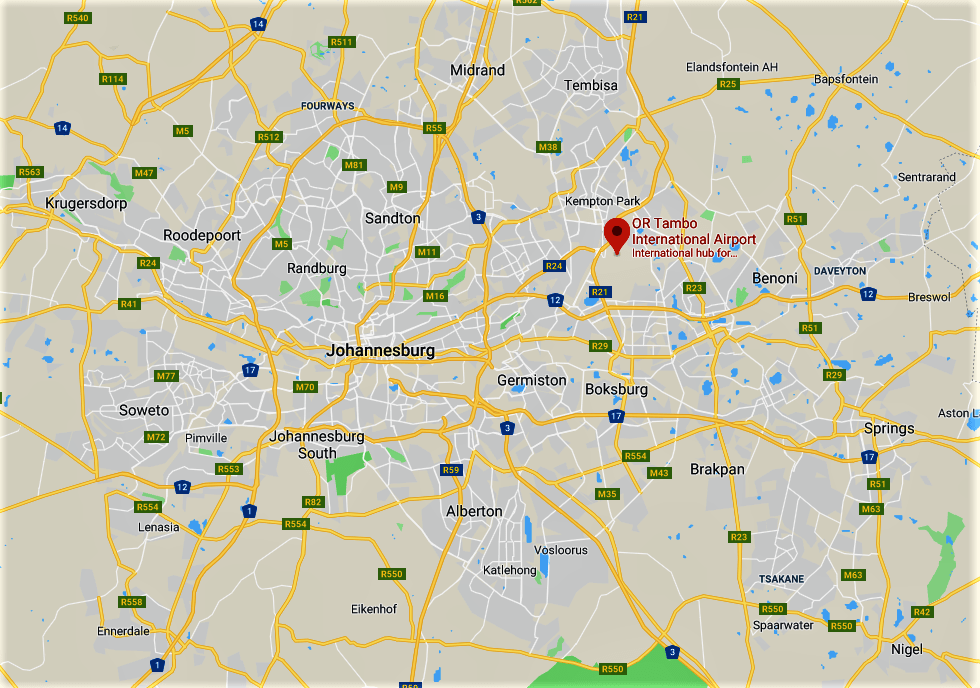

Cargo
| Airlines | Destinations |
|---|---|
| BidAir Cargo | Cape Town, Dar es Salaam, Durban, East London, George, Harare, Kigali, Livingstone, Mauritius, Maputo, Nairobi–Jomo Kenyatta, Port Elizabeth, Victoria Falls, Windhoek-Hosea Kutako |
| Cargolux | London–Stansted, Luxembourg, Nairobi–Jomo Kenyatta |
| EgyptAir Cargo | Cologne/Bonn[ |
| Emirates SkyCargo | Dubai–Al Maktoum, Nairobi–Jomo Kenyatta |
| Ethiopian Airlines Cargo | Addis Ababa |
| Imperial Air Cargo | Bloemfontein, Cape Town, Durban, Port Elizabeth |
| Lufthansa Cargo | Frankfurt, Lagos, Nairobi–Jomo Kenyatta |
| Martinair | Amsterdam |
| Qatar Airways Cargo | Doha, Liège, Nairobi–Jomo Kenyatta, Oslo–Gardermoen |
| Saudia Cargo | Amsterdam, Jeddah, Nairobi–Jomo Kenyatta |
| Singapore Airlines Cargo | Amsterdam, Chennai, Mumbai, Nairobi–Jomo Kenyatta, Singapore |
| South African Airways Cargo | Blantyre, Cape Town, Bloemfontein, Dar es Salaam, Durban, Entebbe, Harare, Kinshasa, Lusaka, Maputo, Mauritius, Nairobi–Jomo Kenyatta, Port Elizabeth, Windhoek-Hosea Kutako |
| Turkish Airlines Cargo | Antananarivo, Istanbul–Atatürk, Khartoum, Nairobi–Jomo Kenyatta |
| Uganda Air Cargo | Entebbe |
Other buildings
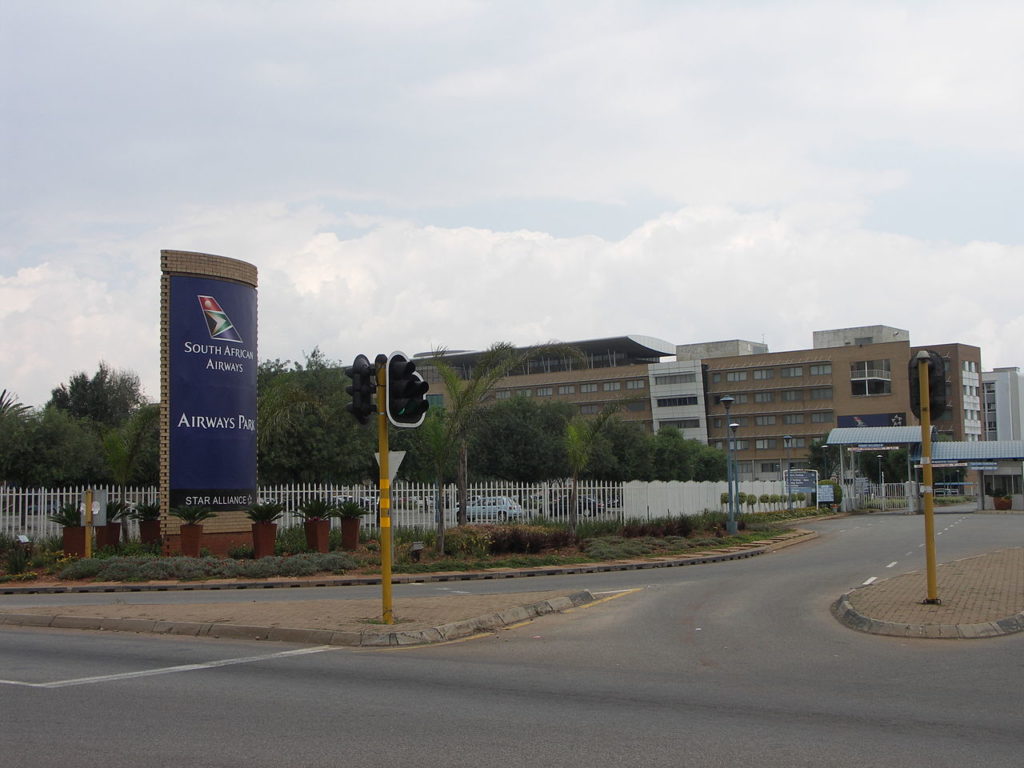

Source: NJR ZA
South African Airways is headquartered in Airways Park on the grounds of O. R. Tambo International Airport. The building was developed by Stauch Vorster Architects. Airways Park was completed in March 1997 for R70 Million ($17.5 Million).The fourth floor of the West Wing of the Pier Development of O. R. Tambo has the head office of South African Express.
Ground transport
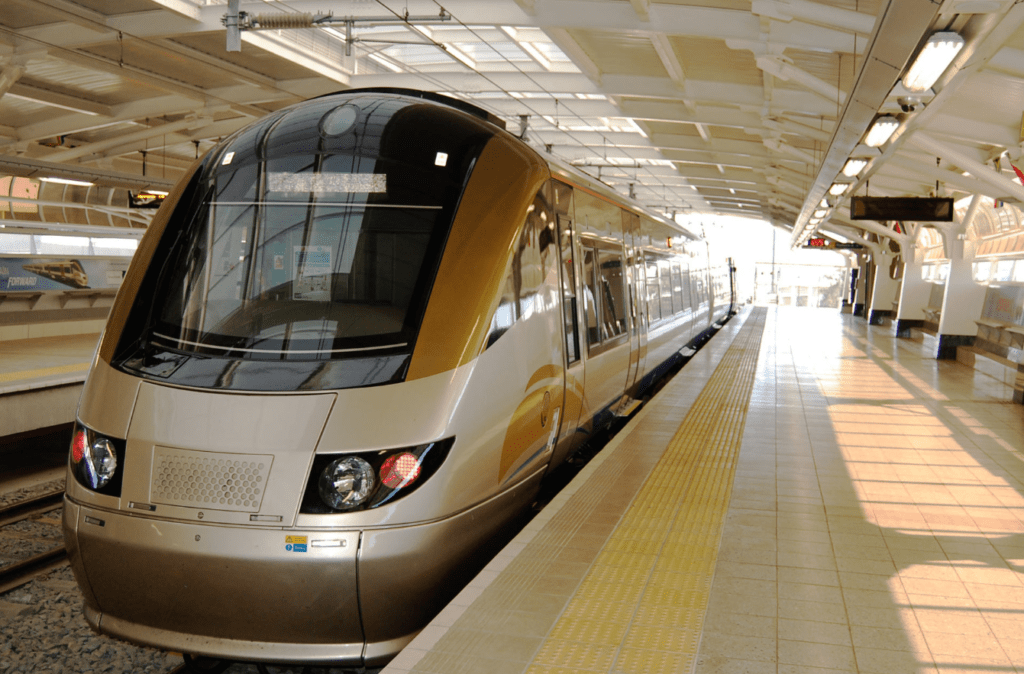

Source: Nithin bolar k
Rail transit
A transit terminal has been built between the domestic and international terminals. It houses the Gautrain station linking the airport to Sandton, a major business district and a primary tourist area, and, from there, the rest of the Gautrain system.
In September 2006 Gauteng Province contracted Bombardier Transportation for a rail link connecting Johannesburg, Pretoria, and the airport, with construction to begin immediately. The section linking the airport to Sandton in Johannesburg was completed on 8 June 2010 in time for the World Cup. Trains run 90 trips per day and carry an estimated 60000 passengers daily.
Car
The airport is easily accessible by car and it is located northeast of Johannesburg Central at the eastern end of the R24 Airport Freeway. It can be accessed by the R24 Airport Freeway (also known as the Albertina Sisulu Freeway) from Johannesburg Central and the R21 highway from Pretoria and the central part of the East Rand. The R24 intersects with the R21 near the airport and with the O. R. Tambo Airport Highway. This highway goes through the airport terminals, separating them from the parking bays, but it branches off into two directions: “departures” and “arrivals”, and then it re-branches into the intersection.
Bus
Five bus city lines, operated by Metrobus and Putco, pass through the airport twice a day. The buses are accessible in the morning and the evening, when there are many passengers departing and arriving. There are also private bus lines operating express buses to the CBD of Johannesburg, as well as other locations.
Accidents and incidents
- 20 October 1957 – A Vickers Viscount G-AOYF, operated by Vickers on a test flight, was damaged beyond economic repair when the starboard undercarriage collapsed following a heavy landing.
- 1 March 1988 – A Comair Embraer EMB 110 Bandeirante ZS-LGP, exploded in mid air whilst on final approach. All seventeen occupants were killed. A passenger was suspected of detonating an explosive device but to this day it has never been proven.
- 22 April 1999 – A Boeing 727 ZS-IJE was damaged beyond repair by large hailstones while on approach for landing. The aircraft landed safely with no loss of life.
- 3 November 2001 – A Reims-Cessna F406 crashed shortly after takeoff from runway 03R, killing all 3 occupants. The aircraft did not have a valid certificate of airworthiness at the time of the incident.
- 9 April 2004 – An Emirates Airbus A340-300 A6-ERN operating flight EK764 from Johannesburg to Dubai sustained serious damage during takeoff when it failed to become airborne before the end of the runway, striking 25 approach lights, causing four tyres to burst which in turn threw debris into various parts of the aircraft, ultimately damaging the flap drive mechanism. This rendered the flaps immoveable in the takeoff position. The aircraft returned for an emergency landing during which the normal braking system failed as a result of the damage. The aircraft was brought to a stop only 250 metres from the end of the 3,400-metre runway using reverse thrust and the alternate braking system. In their report, South African investigators found that the captain had used an erroneous take-off technique, and criticised Emirates training and rostering practices.
- 25 March 2006 – A gunman held up guards at the airport gates. Others armed with AK-47 assault rifles held up guards and police at a South African Airways aircraft and helped themselves to bags of pound sterling banknotes flown in from Britain. Several airport security staff were implicated in the heist.
- 22 December 2013 – A British Airways Boeing 747-400 G-BNLL operating flight BA33 collided with a building at the airport. Four ground-handling staff in the building sustained minor injuries. The airplane was written off and scrapped by April 2015.
- 26 October 2015 – A British Airways operated by Comair Boeing 737-400 ZS-OAA operating flight BA6234 from Port Elizabeth suffered a gear collapse while landing at the airport. There were no injuries.
- 7 March 2017 – A heist, remarkably similar to the heist in 2006, was carried out by a gang of up to 13 robbers who stole a huge sum of used foreign currency notes collected from South Africa’s banks and foreign exchange services. The money was to be transported to London by South African Airways.
Source: .wikipedia.
